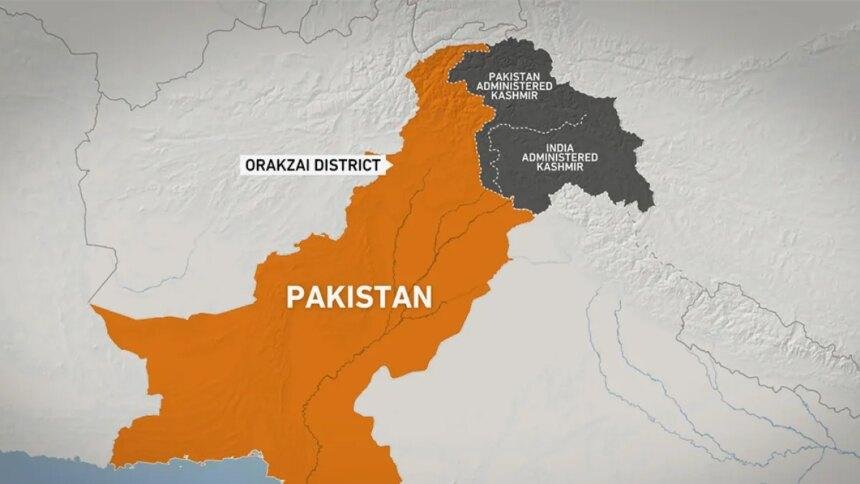Deadly Clash in Pakistan: Military and Taliban Fighters Engage Near Afghan Border
In a tragic escalation of violence, eleven Pakistani military personnel lost their lives during a fierce gunfight with armed militants in the Orakzai district, located in the northwest region of the country. This incident, which occurred early on Wednesday, marks a significant moment in the ongoing conflict between the Pakistani military and the Pakistan Taliban, a group that has increasingly targeted security forces in recent months.
Details of the Incident
According to a statement released by the Pakistani army, the confrontation erupted during an intelligence operation aimed at neutralizing threats in the area. The military described the exchange of fire as “intense,” involving what they referred to as “Khawarij,” a term used to denote banned militant groups, including the Pakistan Taliban. This group has claimed responsibility for the attack, further complicating the already volatile security situation in the region.
Among the deceased military personnel were Lieutenant Colonel Junaid Arif and his deputy, Major Tayyab Rahat, alongside nine other soldiers. The army reported that 19 militants were also killed in the skirmish, highlighting the high stakes involved in these confrontations.
Tactical Ambush
Reports from Reuters, citing Pakistani security officials, indicate that the militants initially ambushed a military convoy using a roadside bomb before engaging in direct gunfire. This tactic of ambush is not new; it has been a hallmark of the Pakistan Taliban’s strategy, which often involves using guerrilla warfare techniques to exploit the vulnerabilities of conventional military forces.
Government Response
In the wake of this tragic event, Prime Minister Shehbaz Sharif expressed his condolences and praised the bravery of the security forces. He emphasized the sacrifices made by the troops in their ongoing battle against terrorism, a sentiment that resonates deeply in a country that has faced significant challenges from various militant groups over the years.
Historical Context
The Pakistan Taliban, officially known as Tehrik-i-Taliban Pakistan (TTP), has been a persistent threat to the stability of Pakistan since its formation in 2007. The group seeks to impose a strict interpretation of Islamic law and has been responsible for numerous attacks on military and civilian targets alike. Their resurgence in recent months can be attributed to a combination of factors, including perceived weaknesses in the Pakistani military’s counter-terrorism strategies and the ongoing instability in neighboring Afghanistan.
The TTP has exploited the porous border between Pakistan and Afghanistan, using it as a safe haven for training and planning attacks. Islamabad has long accused the Afghan Taliban of providing support to the TTP, a claim that has been denied by both parties. This complex web of alliances and enmities complicates the security landscape in the region, making it difficult for the Pakistani military to effectively combat these threats.
Rising Violence
The recent uptick in violence is alarming, as it reflects a broader trend of increasing attacks on Pakistani security forces. The TTP’s strategy appears to be one of attrition, aiming to wear down military capabilities through sustained assaults. This has raised concerns among security analysts about the potential for a more extensive insurgency, reminiscent of the early 2000s when the TTP was at its peak.
The Pakistani military has responded with a series of operations aimed at dismantling militant networks, but the effectiveness of these efforts has been called into question. The challenges are compounded by the need for a comprehensive approach that addresses not only military tactics but also the underlying socio-economic issues that fuel extremism.
International Implications
The situation in Pakistan has broader implications for regional stability. The ongoing conflict has drawn the attention of international observers, particularly as it relates to the security of nuclear-armed Pakistan. The potential for a destabilized Pakistan poses risks not only to its neighbors but also to global security.
Moreover, the narrative that India is allegedly funding and supporting the TTP adds another layer of complexity to the already fraught relations between the two countries. Both India and Pakistan have a long history of mutual suspicion and conflict, and any perceived external support for militant groups can exacerbate tensions.
Conclusion
The deadly clash in Orakzai district serves as a stark reminder of the ongoing challenges faced by Pakistan in its fight against terrorism. As the Pakistan Taliban continues to assert its presence, the military’s response will be crucial in determining the future security landscape of the region. The loss of life among military personnel underscores the high stakes involved in this conflict, and the need for a multifaceted approach that addresses both immediate security concerns and the underlying issues that contribute to extremism. As the situation evolves, the international community will be watching closely, aware that the implications of this conflict extend far beyond Pakistan’s borders.











